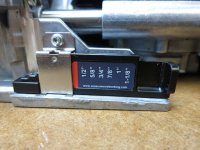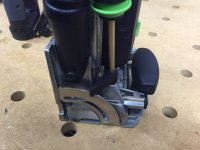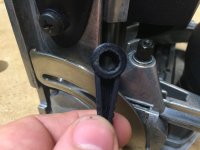When my Domino was new out of the box it suffered from "fence drift" which I understand to be one of the issues the Domiplate is meant to address. But I found that the fence can be adjusted so that its maximum clamping force is much greater and now I don't ever have a "fence drift" problem any more. However I did get Seneca's
Imperial Thickness Gauge which solves the other problem the domiplate is meant to address. Nice thing about the gauge is that it doesn't ever have to be removed to store the tool or installed before you can get to work. And best of all, because it is kept installed on the tool it does not have to be carried around or stored outside of the Domino's systainer. A better way to go in my opinion.






